
by: Doris Santarone
Assignment #3: Quadratics in the xb Plane
Consider the quadratic: ![]() . If we graph this quadratic in the xb plane, we see this:
. If we graph this quadratic in the xb plane, we see this:

The graph is a hyperbola. This hyperbola has the following characteristics:
1) The equation for the hyperbola in function notation is 
2) Vertical asymptote at x = 0
3) Oblique asymptote at y = -x (can find this by calculating the division through long division of synthetic division)
4) The graph has a local minimum at (-1, 2) and a local maximum at (1, -2).
5) The domain of the hyperbola is (-infinity, 0) (0, infinity).
6) The range of the hyperbola is (-infinity,-2) (2, infinity)
See the graph here that contains the asymptotes and the local minimum and local maximum.
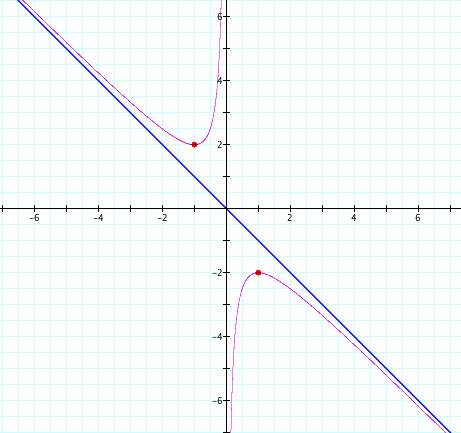
If you take a particular value of b, such as 4, and graph this on the same graph as the hyperbola, we will see this:
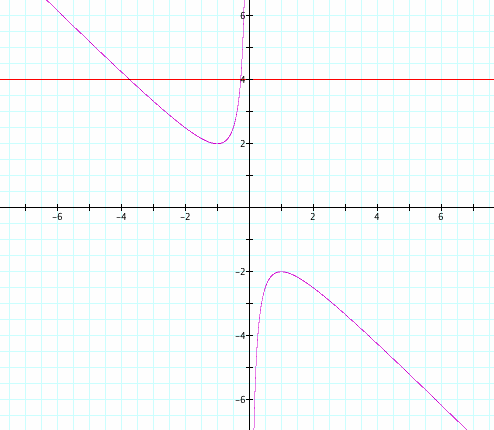
The line b = 4 is a horizontal line that intersects the hyperbola at two points. These two points tell us the roots of the original quadratic ![]() , where b = 4. Let's graph several values of b, say b = -5, -3, -2, -1, 1, 2, 3, and 5.
, where b = 4. Let's graph several values of b, say b = -5, -3, -2, -1, 1, 2, 3, and 5.
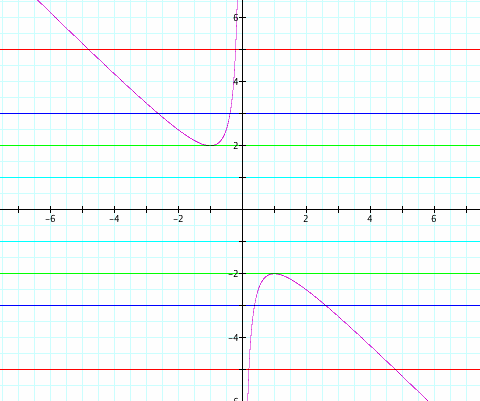
For any b value, where b < -2 or b > 2, there are 2 roots. For b = -1 and b = 1, there is only one root. And for -2 < b < 2, there are no roots.
Now, consider the quadratic: ![]() . When we graph this quadratic in the xb plane, we see this:
. When we graph this quadratic in the xb plane, we see this:
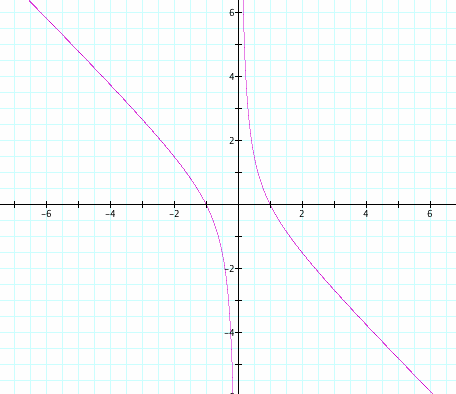
If we graph some values of b, say b = -5, -3, -2, -1, 1, 2, 3, and 5 on the same graph, we get:
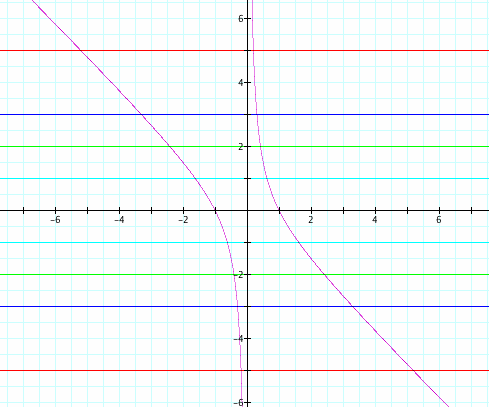
You can see that for the quadratic ![]() , there are always 2 roots. So, when does this change? For what values of c does the quadratic always have 2 roots and when does it not? View the animation below for c values in the interval (-10,10).
, there are always 2 roots. So, when does this change? For what values of c does the quadratic always have 2 roots and when does it not? View the animation below for c values in the interval (-10,10).
When c < 0, the quadratic ![]() always has 2 roots!
always has 2 roots!
Back to Homepage